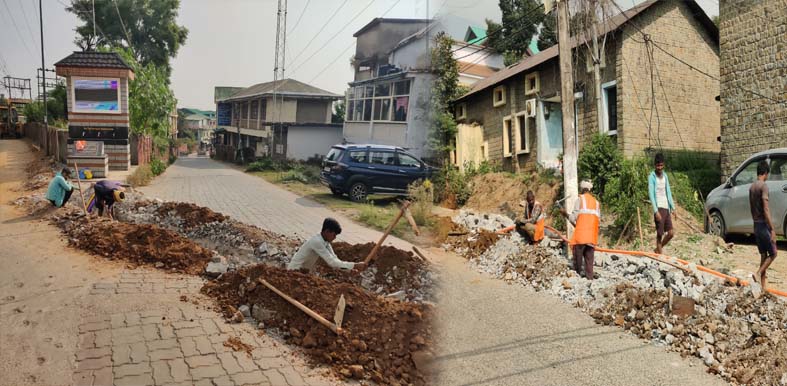Himachal’s Contracting Field: Tax Burdens Limit Opportunities for New Contractors

Bad condition if road in Dharamshala (File photo)
Dharamshala: Aspiring young entrepreneurs in Himachal Pradesh are facing steep challenges in securing government contracts due to increasing tax burdens.
These financial constraints, especially affecting departments like the Jal Shakti Vibhag and Public Works Department, are creating significant barriers for new entrants, while established contractors dominate the field.
The outcome is a lack of fresh competition, leaving government contracting as an option only for seasoned players who have managed to thrive despite mounting financial pressures.
‘Bharat Mata…’ Wife’s last salute in Mandi as Himachal martyr killed in J&K laid to rest
“A key factor in the struggle for new contractors is the heavy tax and compliance load. Prior to 2017, contractors in Himachal Pradesh paid only a 5% VAT. However, since the implementation of the GST Act, they now face an 18% GST rate, along with an additional 24% contribution to the Employees’ Provident Fund Organization (EPFO) for their employees” said a source of the department requesting anonymity.
These financial obligations place a considerable burden on new contractors who lack the capital reserves to sustain long bidding cycles and delayed government payments. The current system heavily favours those who can underbid, a trend that established contractors are able to navigate with ease due to their stable financial standing.
Well placed sources divulged that when tenders are opened, whether online or offline, preference is often given to contractors who can quote the lowest rates.
New contractors are especially impacted as they must shoulder the initial expenses of the tender, with reimbursement often depending on the government’s budget allocations. The delays in receiving payments for completed work further exacerbate the financial strain, making it challenging for newcomers to manage tax and EPFO liabilities while awaiting payment for their services.
“The current setup has practically driven many new contractors away,” said struggling young entreprenuer. “Those with long-standing businesses continue to grow, but young contractors are struggling to even establish a foothold” he added.
In the meantime, established contractors, who have adapted to the evolving financial landscape, continue to profit significantly. The situation has led to a widening income disparity between established contractors and newcomers, with many young entrepreneurs finding it impossible to sustain operations amidst hefty tax requirements and delayed payments.
The impact of these financial barriers extends beyond individual businesses to the overall competitiveness in government contracting. A once-thriving market for young professionals now sees fewer entrants, signalling a need for government intervention to address tax burdens that may be hampering the growth of new contractors and the infusion of fresh talent in the field.




